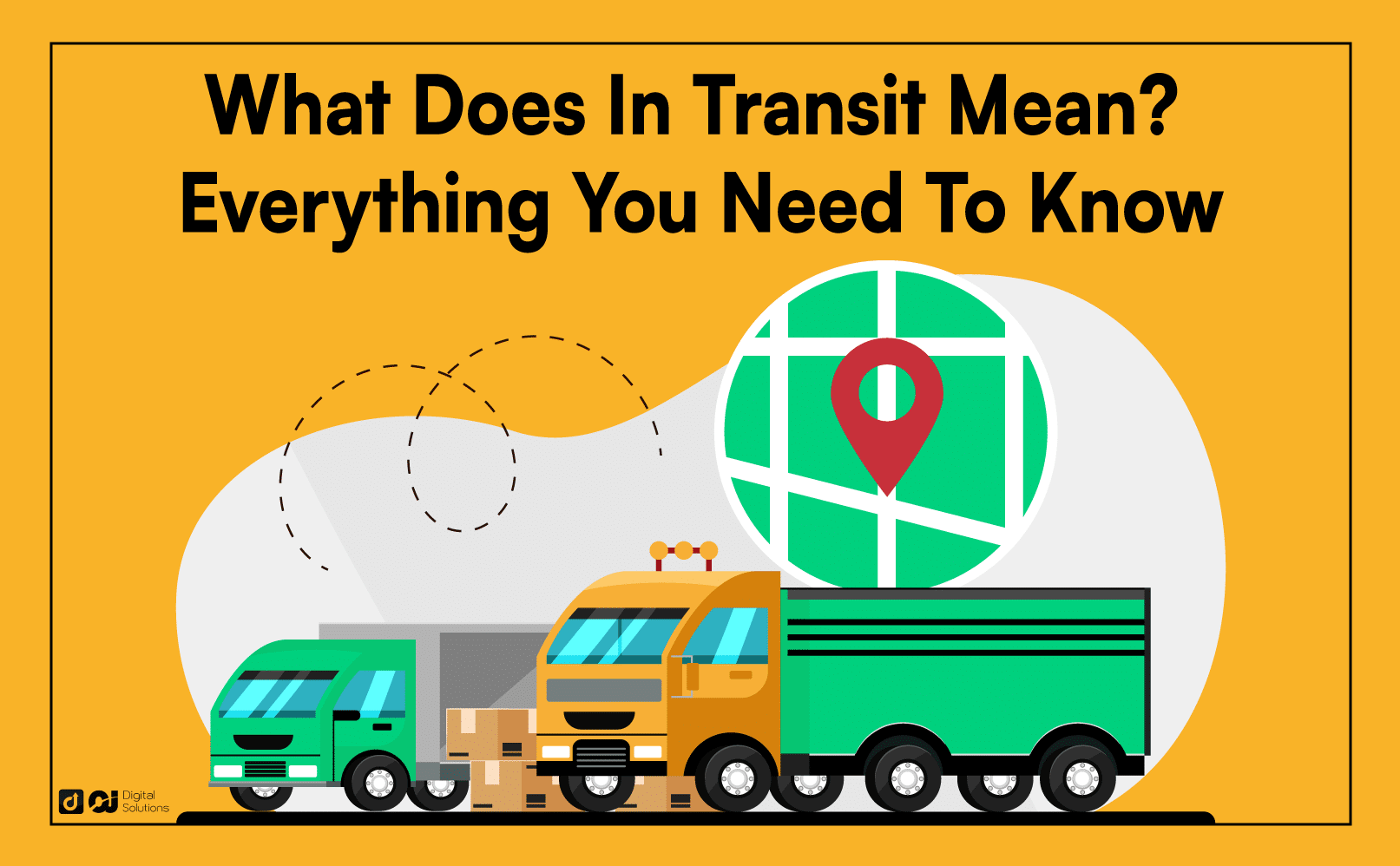When you order a package online, you may receive a tracking number that allows you to keep tabs on the status of your shipment.
One of the most common tracking statuses you might see is In Transit.
What does In Transit mean in shipping?
In this in-depth guide, you’ll learn what In Transit means as well as the following:
The different shipping stages
How to track your package
What to do if your parcel gets lost or delayed
If you’re ready to go all in with an understanding of the shipping process, this guide is for you.
Let’s get started.
What Does In Transit Mean?
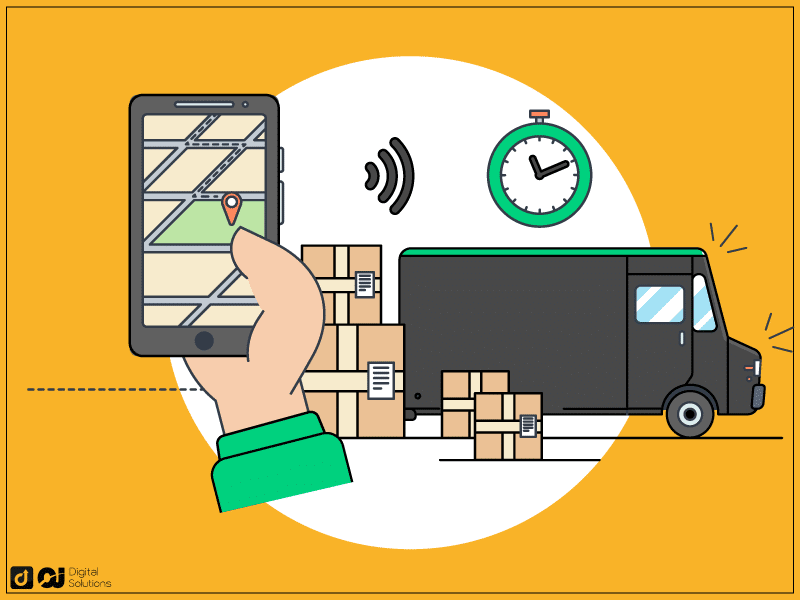
Major shipping couriers provide real-time status updates that allow customers to monitor their shipment’s progress.
Courier companies scan each shipment at various checkpoints during the delivery process. This allows them to locate packages and provide real-time tracking information.
You can use online tools or the courier’s website to track your package with your tracking information. You can also use any major search engine, like Google.
One of these status updates you’ll see is In Transit.
What does it mean when a package is in transit?
In Transit means the carrier is transporting the package from one place to another.
This could mean it’s on-board USPS trailer trucks, on a plane, or sitting in the courier company’s depots, waiting for the next leg of its journey.
Depending on the carrier and shipping method, you may see a more detailed tracking status, including the shipment’s exact location.
The Difference Between In Transit and Out for Delivery
What does it mean when an order is in transit vs. when it’s out for delivery?
A package in transit is moving from one shipping facility to another. This could be from a national shipping center to a regional center or a regional shipping center to a local sorting facility.
When the courier company loads your package onto the delivery truck, the status updates to Out for Delivery.
Here’s a quick comparison between Out for Delivery and In Transit.
1 – What Is In Transit?
A package in transit is moving along but not yet on the final leg of the journey.
2 – What Is Out for Delivery?
The package left the final pickup point and is coming to the recipient’s doorstep.
How Long Does In Transit Take?
The transit time depends mostly on your chosen shipping method. Some examples are:
Standard Shipping Service
Standard shipping is the common and cost-effective option, with transit times ranging from a few days to several weeks.Expedited Shipping Service
Expedited shipping is a good option if you need your package to arrive faster than a week. It usually takes one to five business days, depending on the carrier and shipping distance.Overnight or Next-Day Shipping
This shipping option is the fastest, usually delivered within one business day. Courier companies prioritize your package for immediate transportation.
The estimated delivery time depends on other factors, as well. The distance between the origin and destination and any potential delays can affect the total transit time.
Domestic shipments can take two days to a week to reach their final destination.
International shipments usually take one to four weeks, depending on the destination country and customs processes.
These are just estimates, and the actual transit times may vary. The timeframe you see is the average calculated based on the courier’s shipping history and logistics processes.
Track your package using the provided tracking details to get accurate information about its progress.
Why Is It Important To Learn The In Transit Meaning?

Businesses and households should learn what In Transit status means for the following reasons.
1 – Tracking and Visibility
The In Transit status update provides real-time tracking and shipment visibility. Businesses and individuals can monitor the progress of their packages.
2 – Delivery Assurance
Knowing the shipment statuses is important for meeting customer expectations and providing accurate delivery estimates for businesses and online vendors. It helps them communicate effectively with customers and proactively address delays or issues.
3 – Inventory Management
Businesses rely on timely deliveries to manage their inventory effectively.
The In Transit shipment status lets businesses track incoming shipments, plan for restocking, and maintain optimal inventory levels to meet customer demands without overstocking.
4 – Customer Satisfaction
For businesses and individuals, In Transit tracking helps manage expectations and provide a positive customer experience.
It enables businesses to update customers about the progress of their orders, address any concerns, and enhance overall satisfaction.
5 – Problem Identification and Resolution
If delays, damages, or other issues happen during transit, the In Transit status helps identify when and where the problem happened.
Businesses can take the necessary actions to resolve the issue efficiently and minimize the impact on customers, like contacting the courier company or initiating a claim.
Most Common Reasons Why Packages Get Stuck in Transit
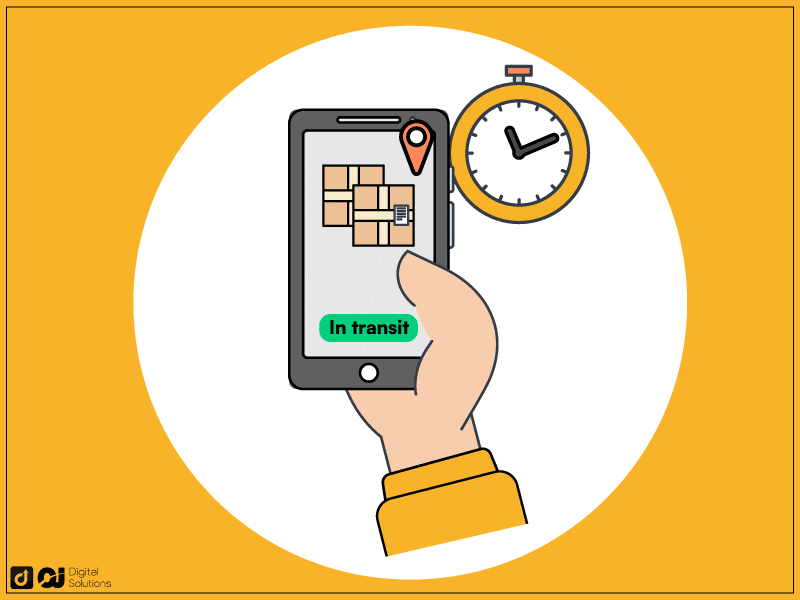
Packages can get stuck in transit for various reasons. Let’s explore some common factors that can lead to delays or packages getting stuck.
1 – Transportation Issues
Delays can happen due to transportation issues, like logistical challenges, congestion, or disruptions in the carrier’s network. This could include weather conditions, vehicle problems, or unexpected shipment rerouting.
2 – Customs Clearance
The customs clearance process usually causes delays for international shipments. Customs procedures, document verification, and inspections can sometimes take longer.
3 – Incorrect or Incomplete Address
Wrong details written on the shipping label will cause delays. The given courier company may need to clarify the address details first with the sender or recipient.
4 – Security Checks
International or high-value shipments may undergo security checks.
These checks can be random or triggered by certain factors like unusual size, weight, shape, or inconsistencies in documentation. Security checks may involve additional screening or inspections, leading to transit delays.
5 – Sorting Errors
Mistakes can happen during the sorting process at a distribution center or hub. If carriers misroute or misplace a package, they may need to locate and redirect it before it continues on its intended route.
6 – Peak Season or Holidays
Increased shipping volumes can strain the courier company networks during holidays or major online shopping events.
7 – Unforeseen Circumstances
Occasionally, unforeseen circumstances like natural disasters, labor strikes, or other emergencies can disrupt transportation systems, impacting the package’s estimated delivery time.
Can You Pick Up Your Package While It’s in Transit?
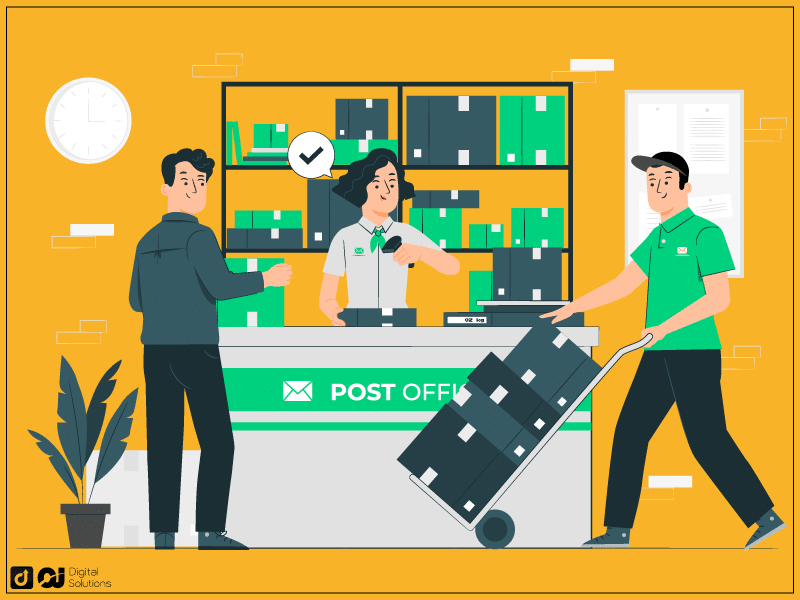
You can’t pick up a package while it’s still in transit, so you must wait until delivery.
As mentioned above, an In Transit status could mean it’s in a delivery truck going to a shipping facility. It could also mean it’s in one of those facilities.
Carriers follow a predetermined route and process to efficiently deliver packages to their intended recipients.
However, it ultimately depends on the shipping company.
Some shipment companies allow you to pick up your package in one of their facilities, while others don’t. Contact the shipping company and ask if they offer this service.
If the shipping company does offer this service, you’ll need to provide them with information, such as your name, address, and tracking number. They’ll inform you on how to pick up your package.
You might pick up your package at a local shipping center, their local facility, or their headquarters.
What USPS Tracking Messages Mean
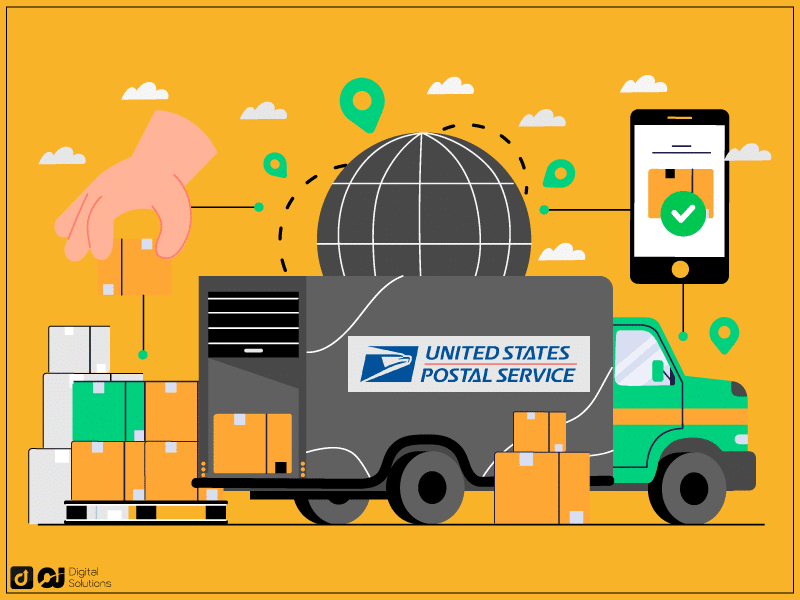
When tracking a package shipped through the United States Postal Service (USPS), you’ll see a tracking message with valuable information about the status and whereabouts of your shipment.
Understanding all the details in a USPS tracking message helps you stay informed and anticipate the arrival of your package.
Here’s a list of what you might see in a typical USPS tracking message.
1 – Tracking Number
The message begins with the unique tracking number assigned to your package. This number is essential for tracking its progress and accessing detailed information.
2 – Current Status
This message will display the current status of your package, such as In Transit, Out for Delivery, Delivered, or Available for Pickup.
Here’s what they mean.
Available for Pickup
This status means your package is in your local post office. You can pick it up at your convenience.
In Transit
When using the postal service, what does In Transit mean?
USPS has accepted your package and initiated the shipping process.
You can track the progress of your package through USPS’s online tracking system, which will provide updates on when the package arrives and departs from each facility.
In Transit, Arriving Late
An In Transit, Arriving Late status indicates that the package is in transit and running late on the initially estimated delivery date.
It can be frustrating for senders and recipients, but it doesn’t necessarily mean the package will never arrive. Sometimes, the package will still arrive on time.
If you don’t receive your package within five days of the expected delivery date, USPS advises you to contact the sender. They will file a claim with the postal service.
Out for Delivery
After the In Transit status, the next phase is typically Out for Delivery.
At this stage, couriers load your package onto the delivery vehicle and assign it to a specific driver, who’ll deliver to your address.
3 – Location Status Update
USPS tracking provides regular location updates as the package moves through various checkpoints.
You’ll see where the package was last scanned, helping you track its journey and estimate its arrival time.
4 – Delivery Progress
The tracking message may also include delivery progress details, like estimated delivery time, expected delivery date, or any delivery expectations or delays encountered during transit.
5 – Delivery Confirmation
The tracking message will indicate the delivery confirmation once the shipping companies successfully deliver a package.
6 – Notifications
USPS tracking allows you to sign up for notifications. It also has an email and text tracking system, so they will notify you if the package is out for delivery or if any status update changes through text and email.
How Long USPS Transit Times Take
USPS transit times vary depending on the distance between the origin and destination. There might also be delays due to weather or other circumstances.
How long does In Transit take? USPS provides the following estimates for its package services.
First Class Package Service or First Class Mail: one to five business days
Priority Mail: one to three business days
Priority Mail Express: one to two business days
USPS Retail Ground: two to eight business days
Media Mail: two to eight business days
Bound Printed Matter: two to eight business days
Parcel Select: two to nine business days
Parcel Select Lightweight: two to nine business days
Periodicals: three to nine business days
USPS Marketing Mail: three to 10 business days
Why Is My USPS Package Stuck in Transit?
If you haven’t seen any new updates on your USPS tracking for a while, there could be delays due to bad weather or high package volume.
In some cases, USPS might not have scanned your package yet.
However, seven days with no updates is usually not normal. USPS customer service for clarification.
When Can You Consider a USPS Package Lost?
USPS doesn’t define a specific timeframe for considering a package lost. The postal service recommends waiting for at least seven to 10 business days after the expected delivery date before taking further action.
If the package hasn’t shown any movement or updates after the waiting period, it’s best to contact USPS customer service. They will initiate a formal investigation or a lost package search.
You’ll need to provide details about the package, tracking number, sender, recipient, and additional information. However, note that the outcome may vary depending on circumstances.
In some cases, they may find and deliver your package.
Otherwise, they may not find it at all. In this case, you may be eligible for a refund or compensation.
What To Do If USPS Lost My Package?
Here are some steps you can take if USPS loses your package.
1 – Contact USPS.
Contact USPS customer service through their website or phone or visit your local post office. Provide them with the details of the lost package.
2 – File a Claim.
If USPS confirms they lost your package, file a claim with USPS. You can initiate the claim process online or complete a form at the local post office. Include all the relevant information and supporting shipping documentation.
3 – Follow Up on the Claim.
Stay in touch with USPS regarding your claim procedure. They may require additional information or evidence. Keep records of communication and documentation related to the claim.
4 – Seek Compensation.
Once they approve the claim, USPS will reimburse you up to the declared value of your package. The amount may depend on the type of service used and any additional insurance purchased.
5 – Consider Additional Actions.
If you’re unhappy with the outcome, you can escalate the matter by contacting USPS Customer & Industry Contact or filing a complaint with the Postal Regulatory Commission.
What FedEx Tracking Messages Mean

Here are some key points to understand about FedEx tracking messages:
1 – In Transit
What does In Transit mean? FedEx has picked up your package and is currently transporting it to its destination.
The package is moving through different FedEx facilities and transportation networks to the final destination address.
2 – Arrived at FedEx Facility
This means your package reached a FedEx facility like a network distribution center or sorting facility undergoing further processing.
3 – Out for Delivery
This status indicates that your package is out for delivery, and the shipping companies should ship it to you on the scheduled delivery date.
4 – Delivered
This message confirms that your package was delivered to you. This includes details like the delivery date, time, and recipient’s name.
5 – Exception
You’ll see an exception message if there’s a problem during shipping. This could be because of address issues, bad weather, or something else that requires further action.
6 – Delivery Attempted
This means the courier attempted to deliver the package, but the recipient wasn’t available. FedEx usually makes more attempts or leaves a delivery notice with instructions.
7 – Shipment Delayed
You’ll see this message if there’s a delay in delivering your package. It could be due to bad weather, logistical problems, or unexpected situations.
8 – Customs Clearance
You might see this message for packages shipped internationally when it goes through customs. It means customs authorities are processing the package before it can reach its final destination.
How Long FedEx Transit Times Take
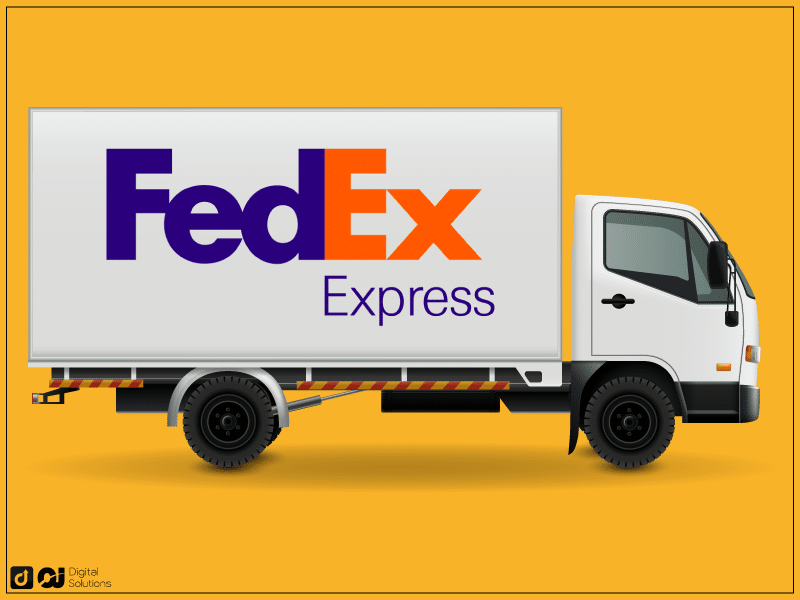
FedEx typically aims to deliver packages within the estimated transit time provided during shipment.
Here are some of their shipping methods within the U.S. and estimated timeframes.
FedEx SameDay: same day
FedEx First Overnight: one business day, by morning
FedEx Priority Overnight: one business day, by noon
FedEx Standard Overnight: one business day, by evening
FedEx 2Day: two business days
FedEx Express Saver: three business days
FedEx Ground: one to five business days
Can FedEx Packages Get Stuck In Transit?
Yes, FedEx packages can get stuck in transit and may experience a delay.
Helpful Tips To Ship Your Package Faster
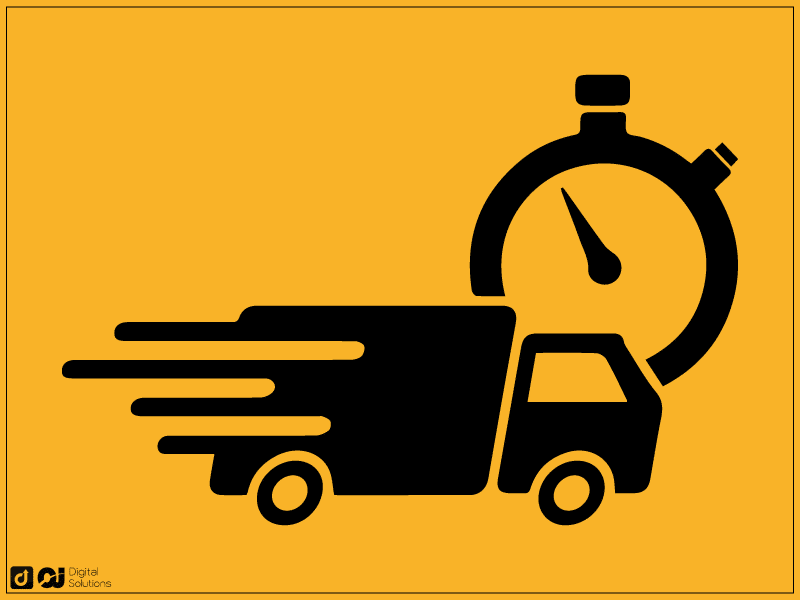
Do you want your package to arrive faster? Follow my tips below.
1 – Choose an Expedited Shipping Service.
Choose a shipping method that offers faster delivery times, like FedEx Express, FedEx Overnight, USPS First Class Mail, USPS Priority Mail, or Priority Mail Express Shipment.
2 – Pack Your Package Efficiently.
Properly package your items to ensure safe and secure transportation. Use appropriate packing materials, padding, and sturdy boxes to minimize additional handling. Improper packaging might result in delays due to damages.
3 – Provide Accurate and Complete Information.
Double-check the shipping address. Ensure all the details, including the recipient’s name, correct address, city, state, and ZIP code, are accurate. Incomplete or wrong details can cause delays or even undeliverable shipments. You may also pay additional surcharges for rerouting your package to the correct address.
4 – Pay Attention to Cutoff Times.
Know the cutoff times for package pickup or drop-off at the shipping company’s location. Shipping earlier can allow the courier to process and ship your package the same day.
5 – Consider Using Prepaid Shipping Labels.
Prepaid tracking labels can help expedite shipping by eliminating the hassle of waiting in line for payment at the carrier’s location.
6 – Follow Shipping Regulations and Restrictions.
Take the time to understand any regulations and restrictions on your package. By adhering to these guidelines, you can ensure smooth processing and minimize delays caused by non-compliance.
7 – Track Your Package.
Use the tracking feature the shipping carrier provides to monitor the progress of your package, giving real-time information about its location and estimated delivery date.
Frequently Asked Questions (FAQs)
Does In Transit Mean It Will Be Delivered Today?
No, In Transit doesn’t mean it’s on a delivery truck on its way to your address. When a package is in transit, it has left its origin. It may be on any of the several checkpoints in the shipment process.
Refer to the estimated delivery date provided by the shipping carrier for a more accurate timeframe.
What’s the Meaning of Arrived at a Local Courier Facility?
Arrived at a local courier facility means the package has arrived in a processing hub. The courier is processing and preparing the package for the next stage of the transportation process.
What Does In Transit Departed Waypoint Mean?
When the status shows In Transit Departed Waypoint, the courier has received the package from a collection center. They must process it before it goes onto the next delivery stage.
What Can I Do for a Parcel Stuck in Transit?
If the shipment status doesn’t change for a long time, here’s what you should do.
Contact the shipping carrier responsible for your packages. Provide your tracking label information and explain the situation. They’ll provide you with all the necessary details and information you need.
Keep an eye on the tracking information for a status update. Temporary delays can happen because of high volumes or transportation issues.
Inform the sender about the situation. They may be able to assist you and contact the carrier or provide additional support.
If a significant amount of time has passed and the package remains stuck or considered lost, file a claim with the carrier. Review their guidelines and follow the necessary steps to initiate an investigation and potentially receive compensation.
Delays happen for various reasons, but staying proactive and maintaining communication with the carrier and sender can help resolve the issue more effectively.
Will I Get the Package Today If It’s Out for Delivery?
When your package is Out For Delivery, it means it’s on its way to your address. The exact timing depends on factors like delivery route and the number of other packages they’re handling.
However, Out for Delivery doesn’t guarantee immediate delivery. To better understand when your package will arrive, track it using the provided tracking details or contact the carrier’s customer service.
What Is Shipped vs. In Transit?
When a seller ships an item, they have handed it over to the carrier for delivery. The carrier is now responsible for transporting it to the destination.
When a package is in transit, the carrier is actively moving and transporting the package from one location to another. The package is en route to the intended destination.
Can You Track Your UPS Package in Real-Time?
You can track your UPS package in real time with UPS Tracking. This allows you to monitor the progress from pickup to delivery.
Enter the tracking number to access detailed information about the package’s location, transit history, and estimated delivery date.
The Bottom Line
I hope you found this guide helpful and informative. Understanding the meaning of In Transit is crucial for a smooth shipping experience.
Track your packages, follow shipping guidelines, and be aware of common tracking updates to ensure a smooth shipping experience. Know what to do if a package gets stuck in transit.
I’d like to hear from you. Which tip from this guide resonated most with you? Are you planning to use tracking tools more effectively or stay informed about common tracking updates?

